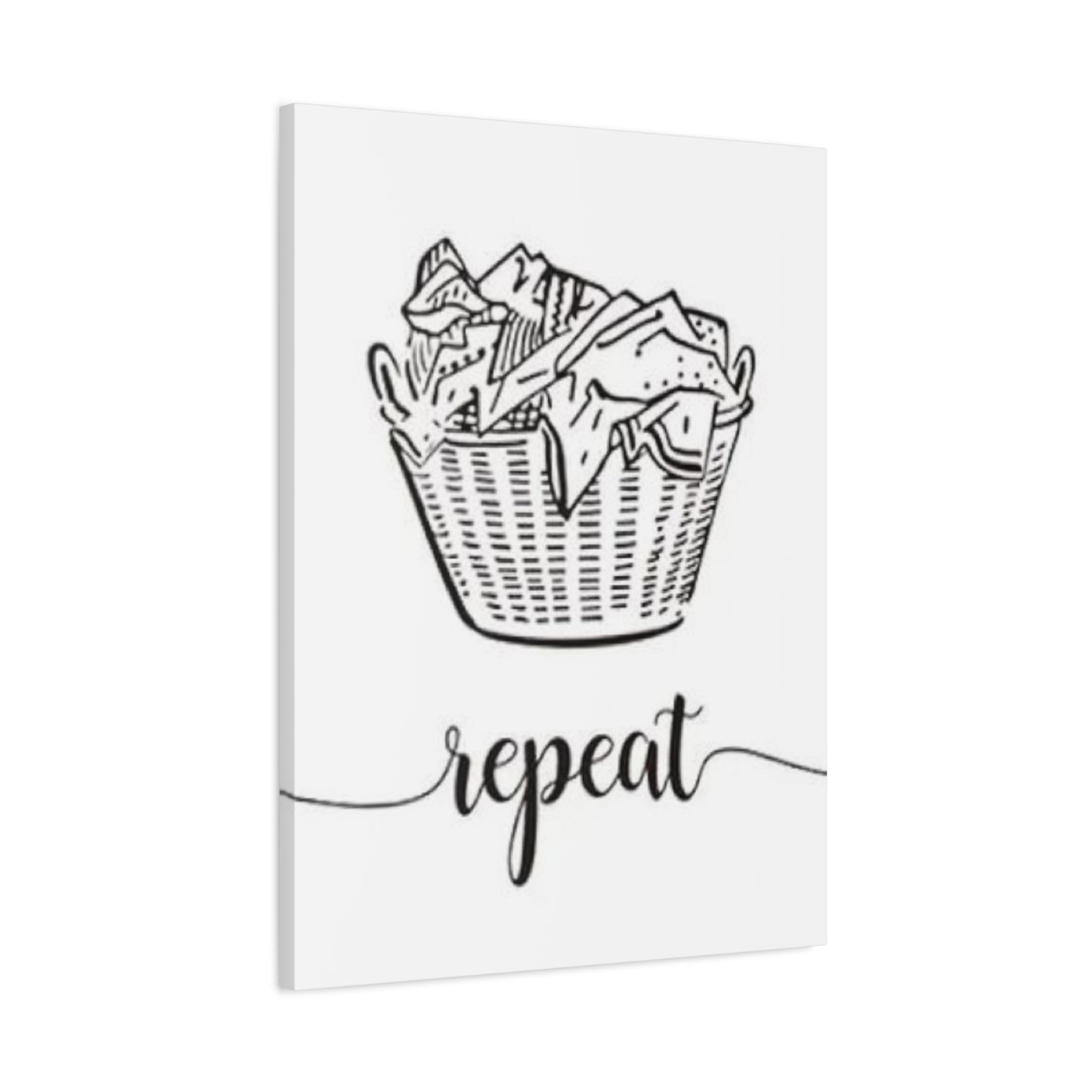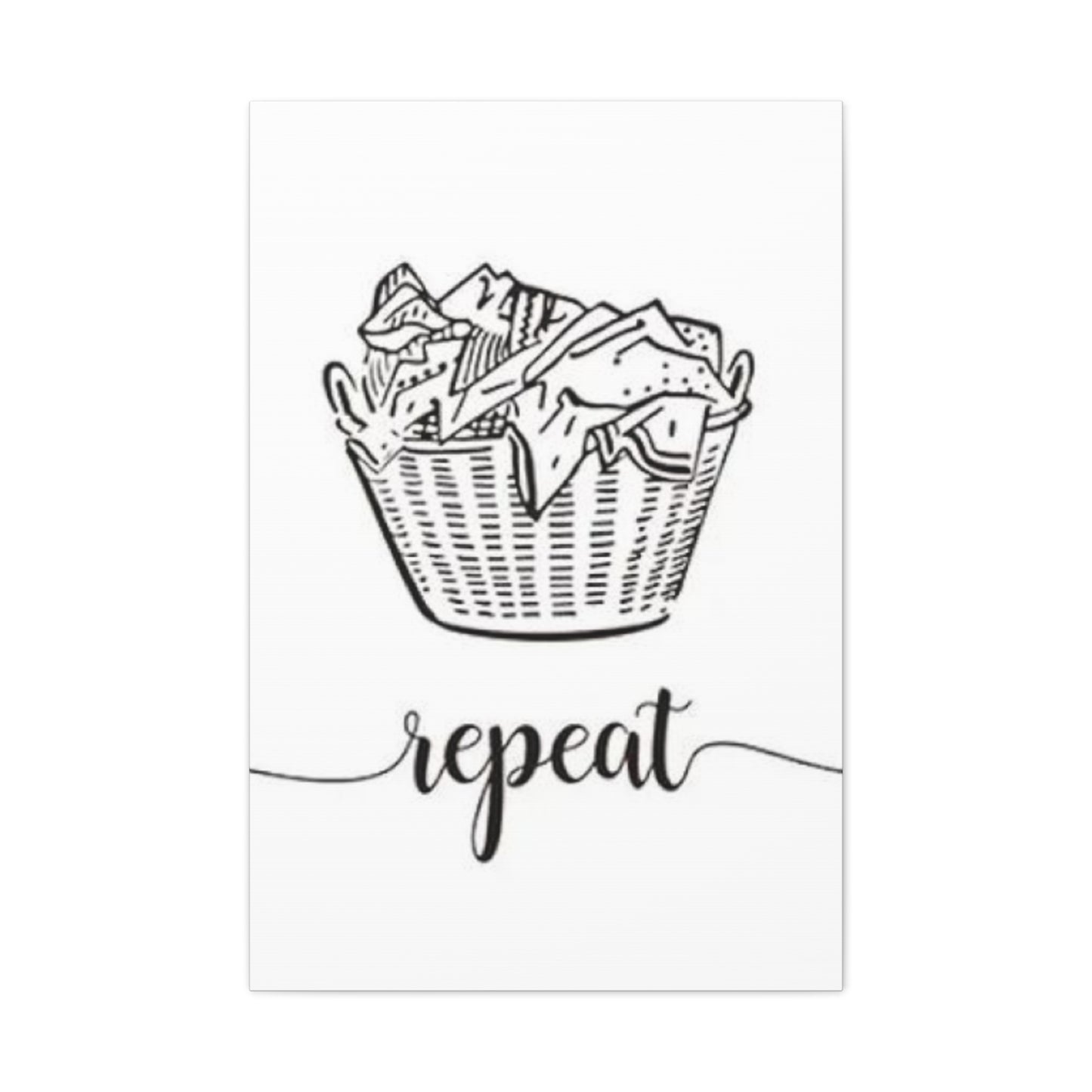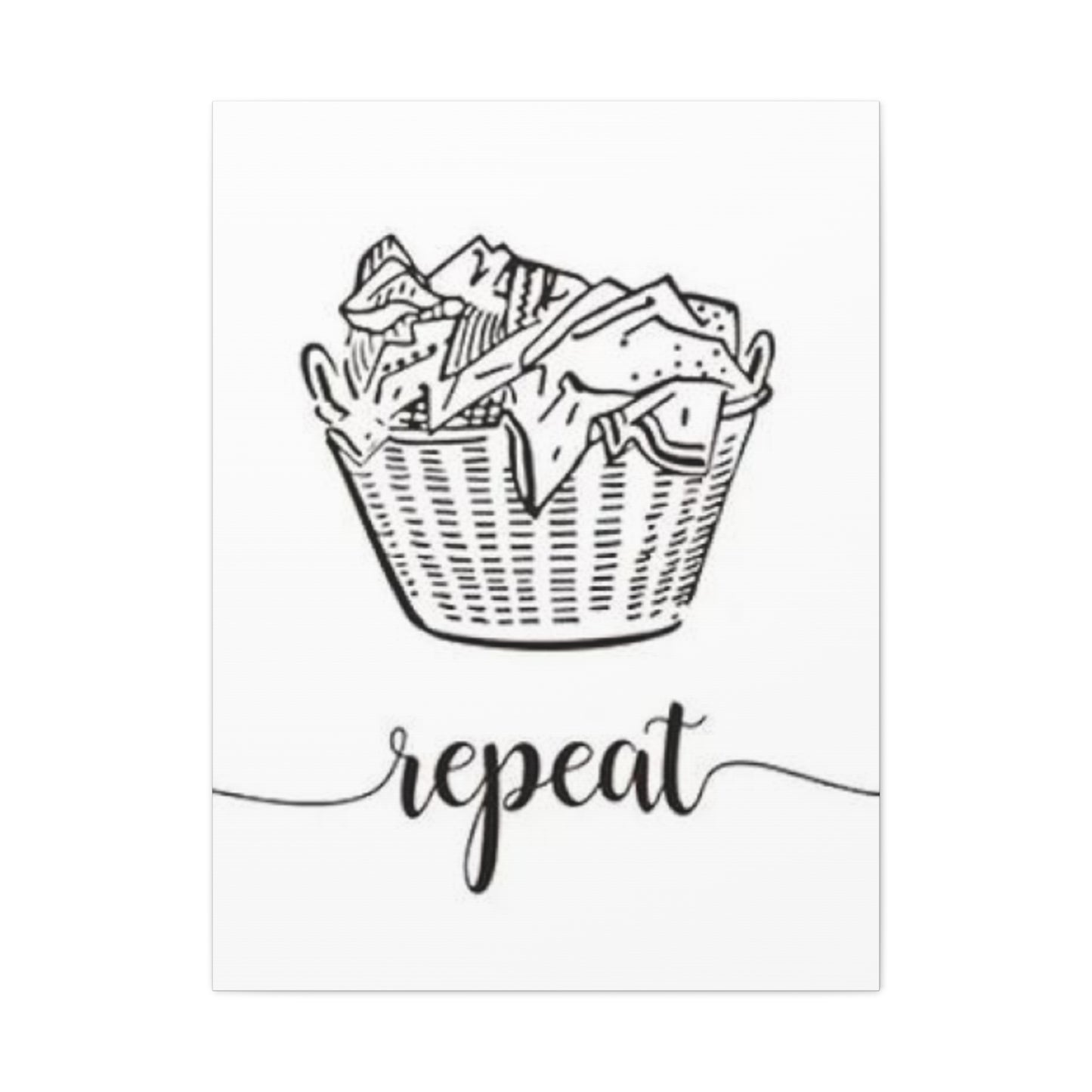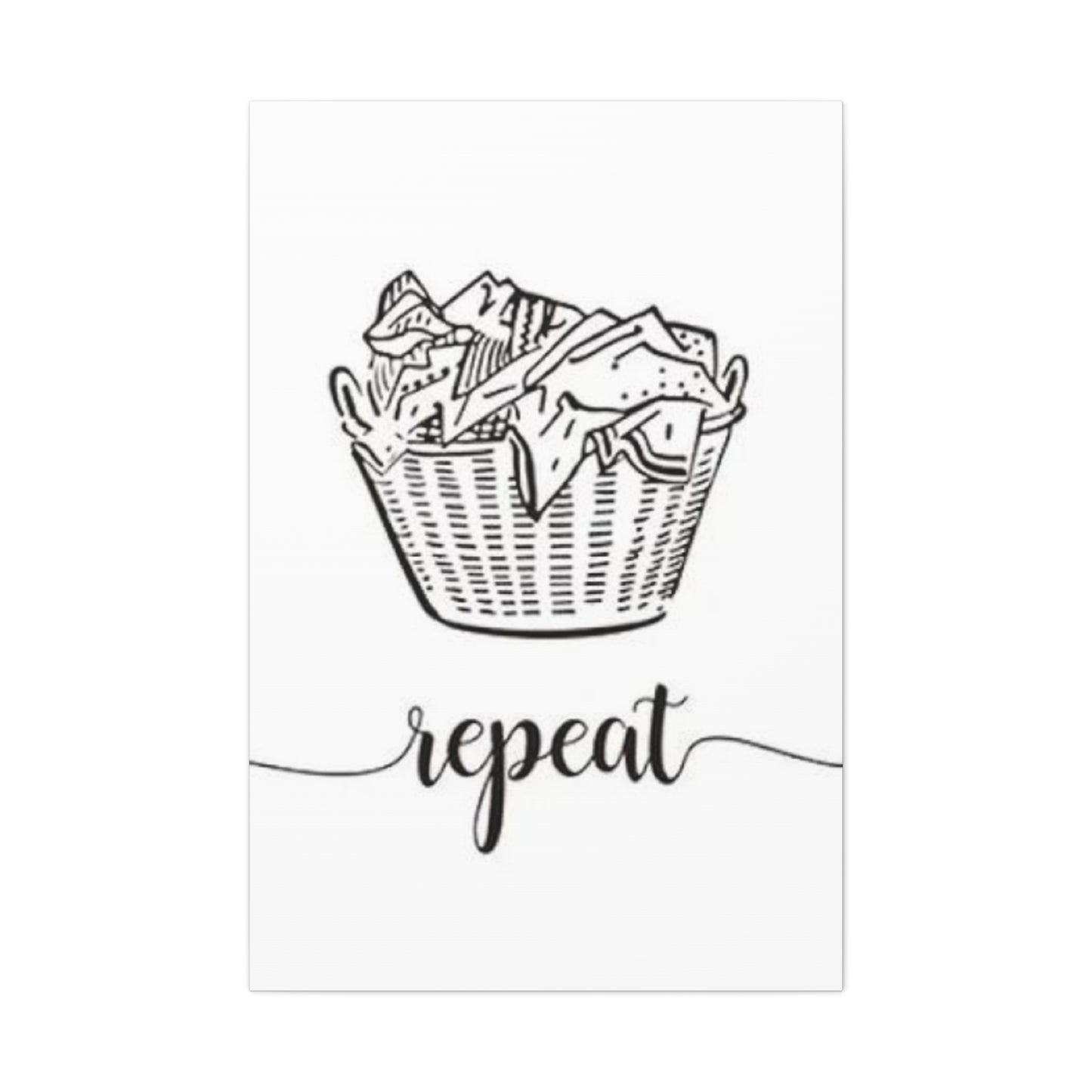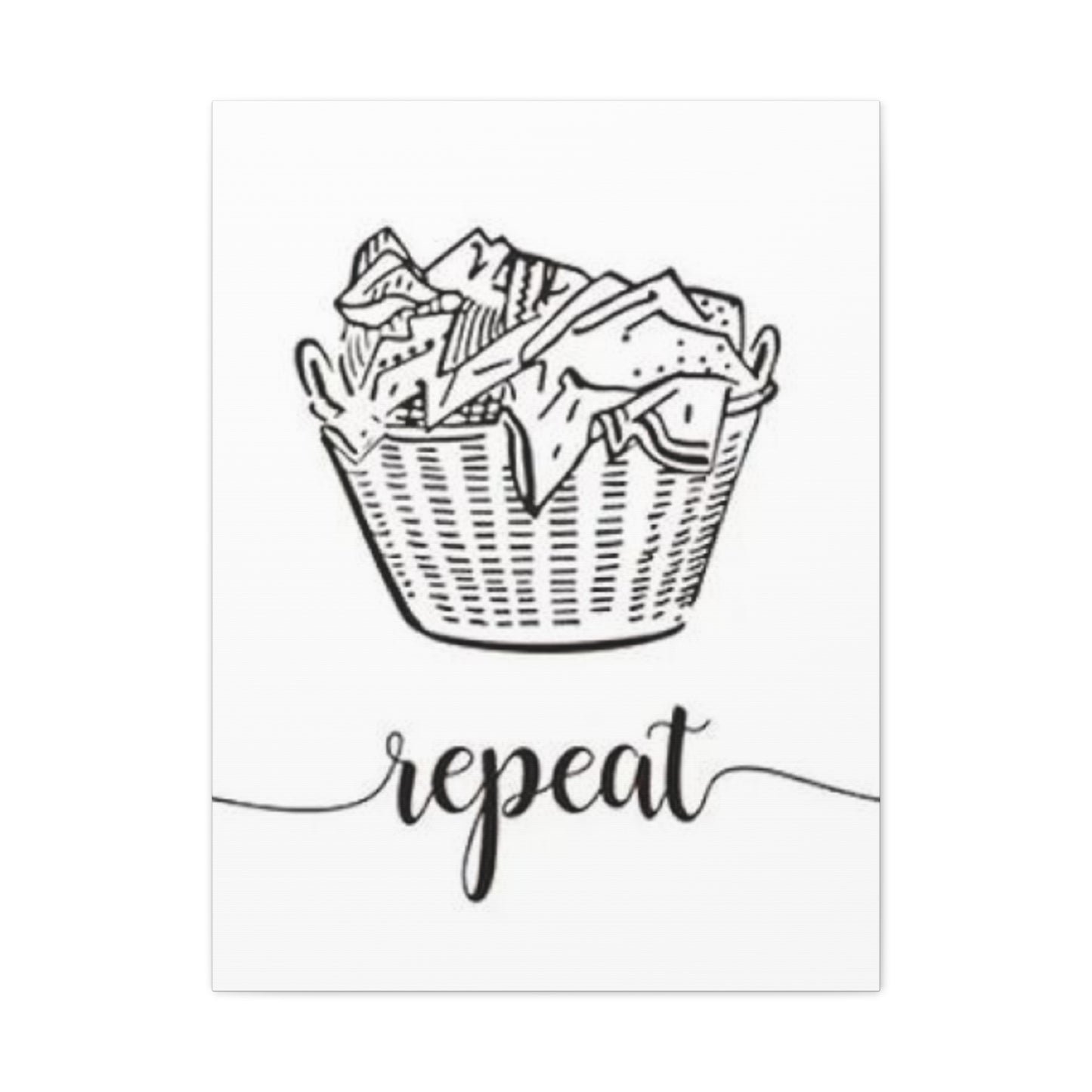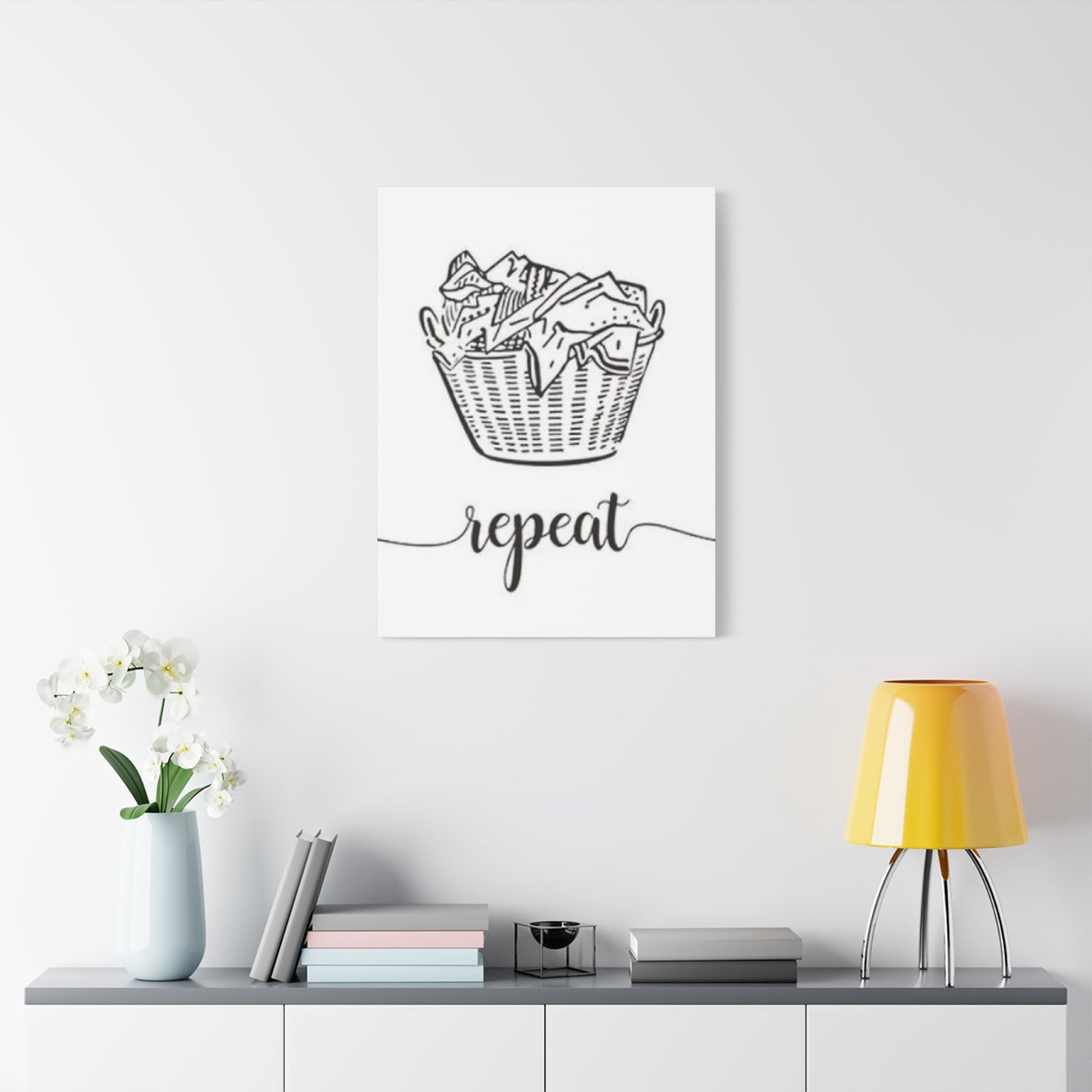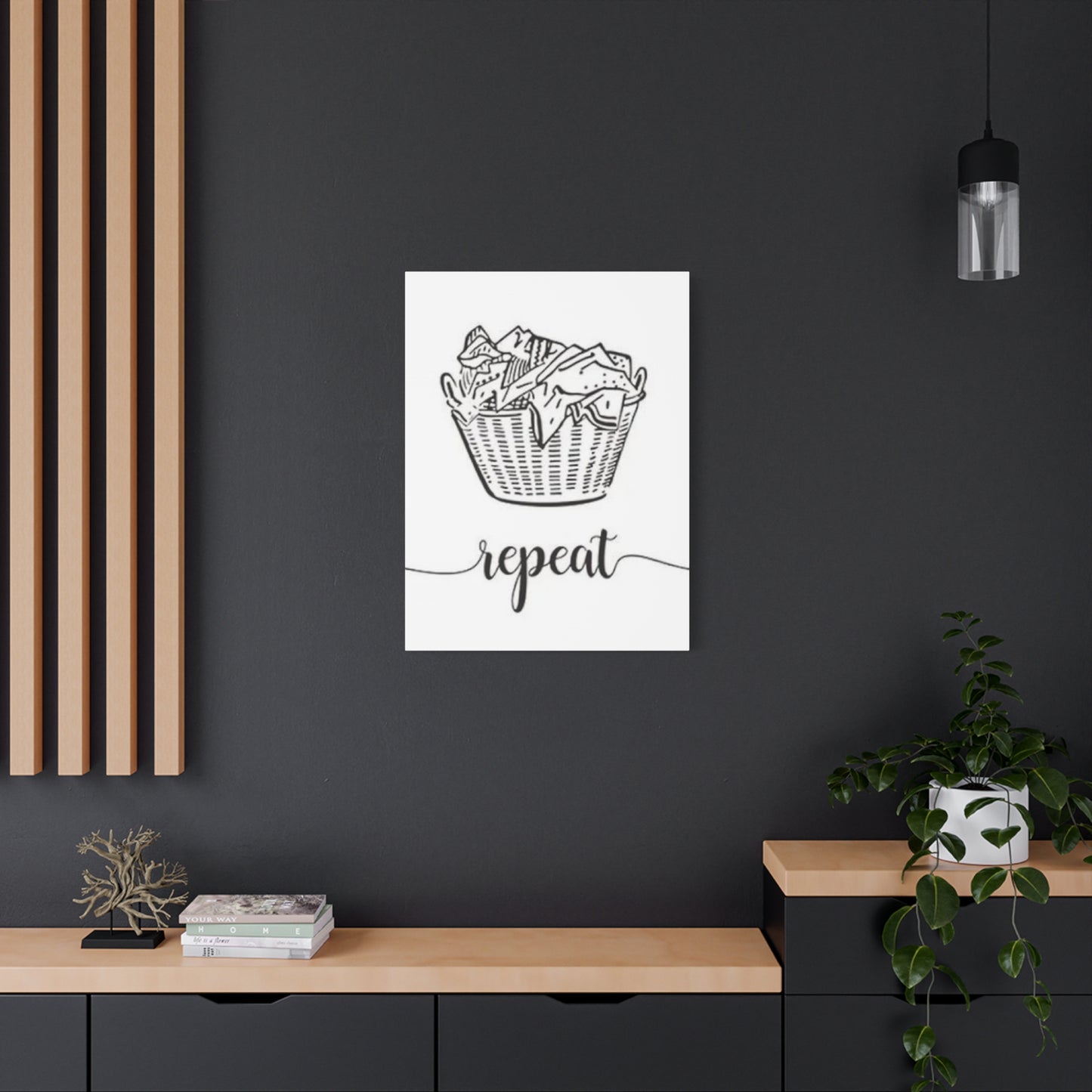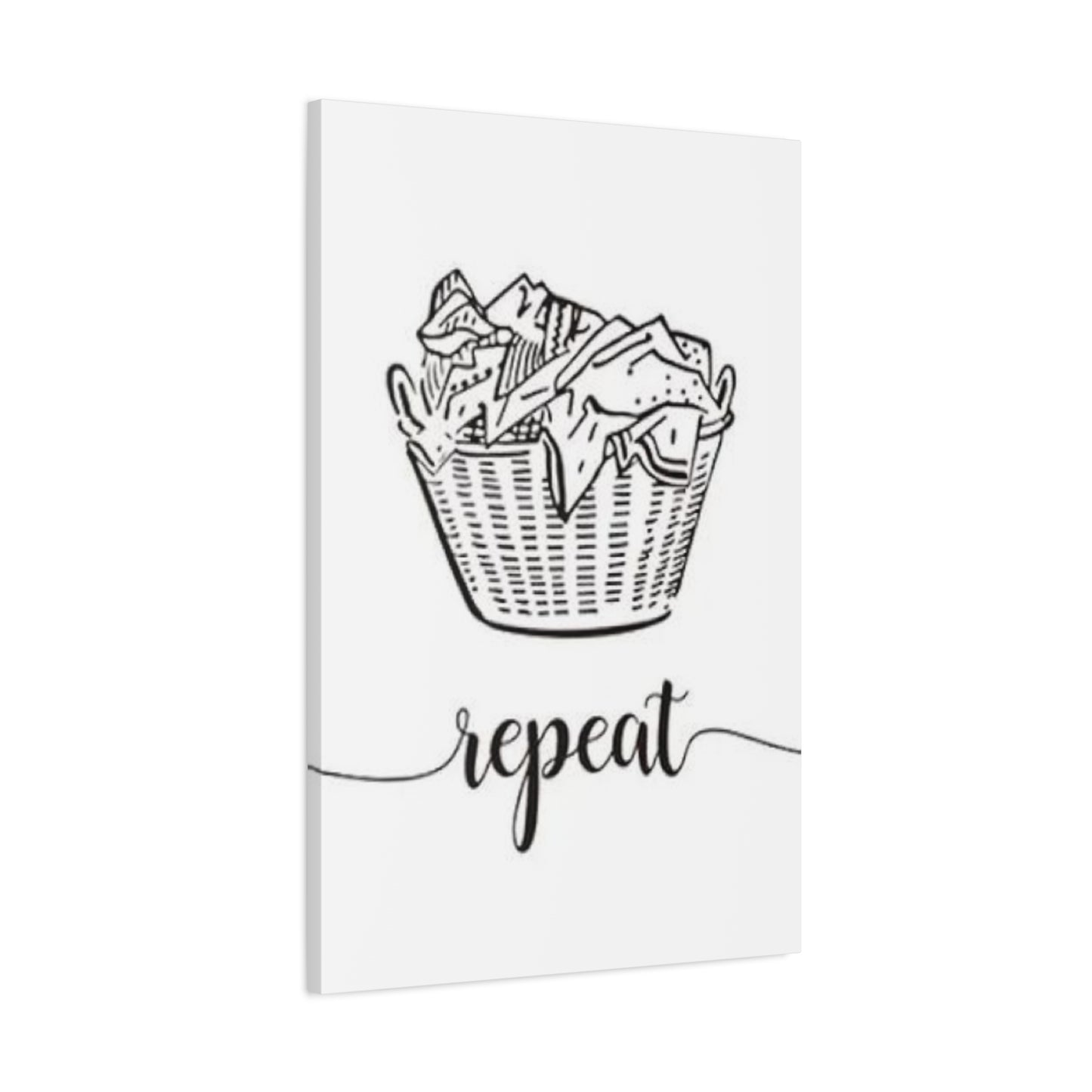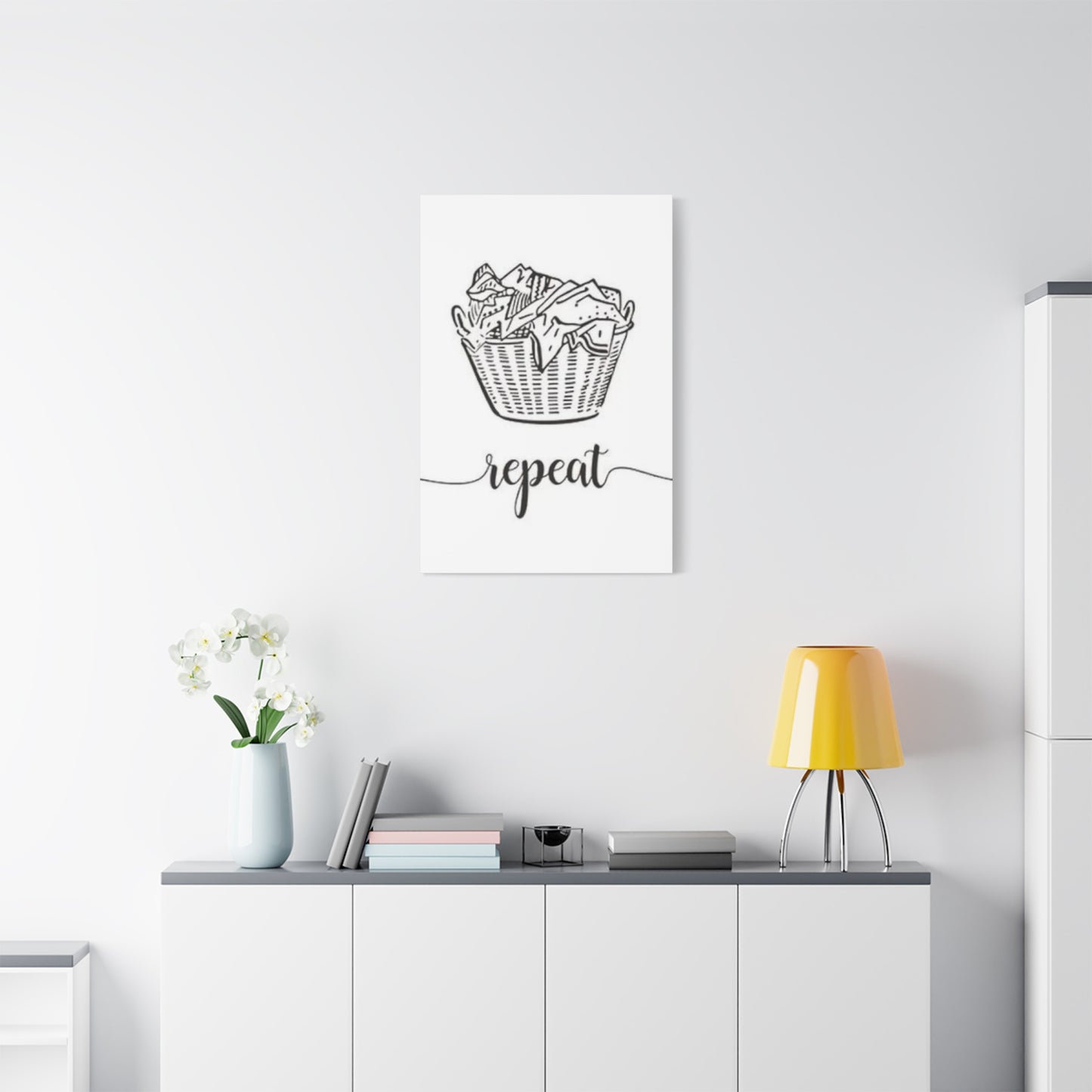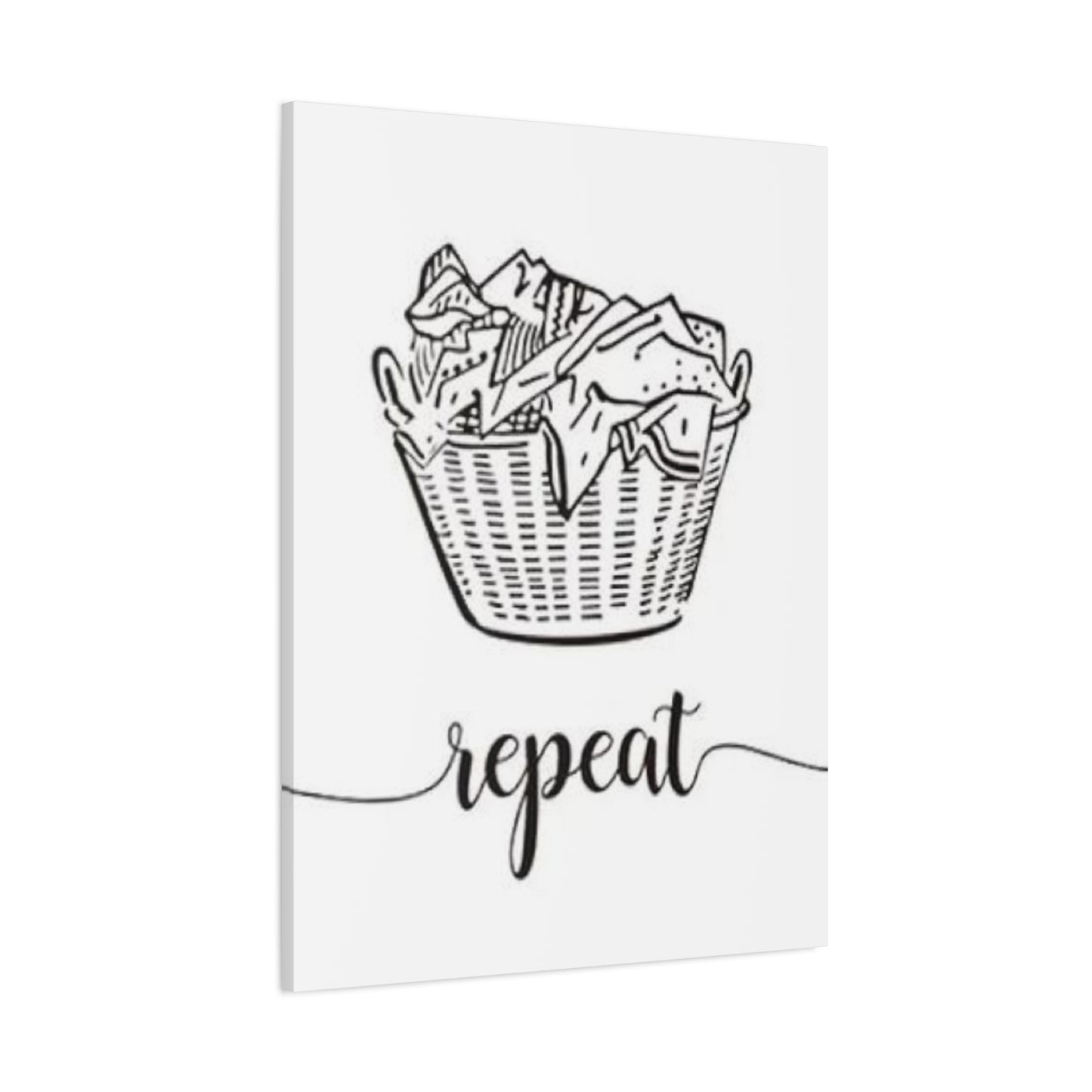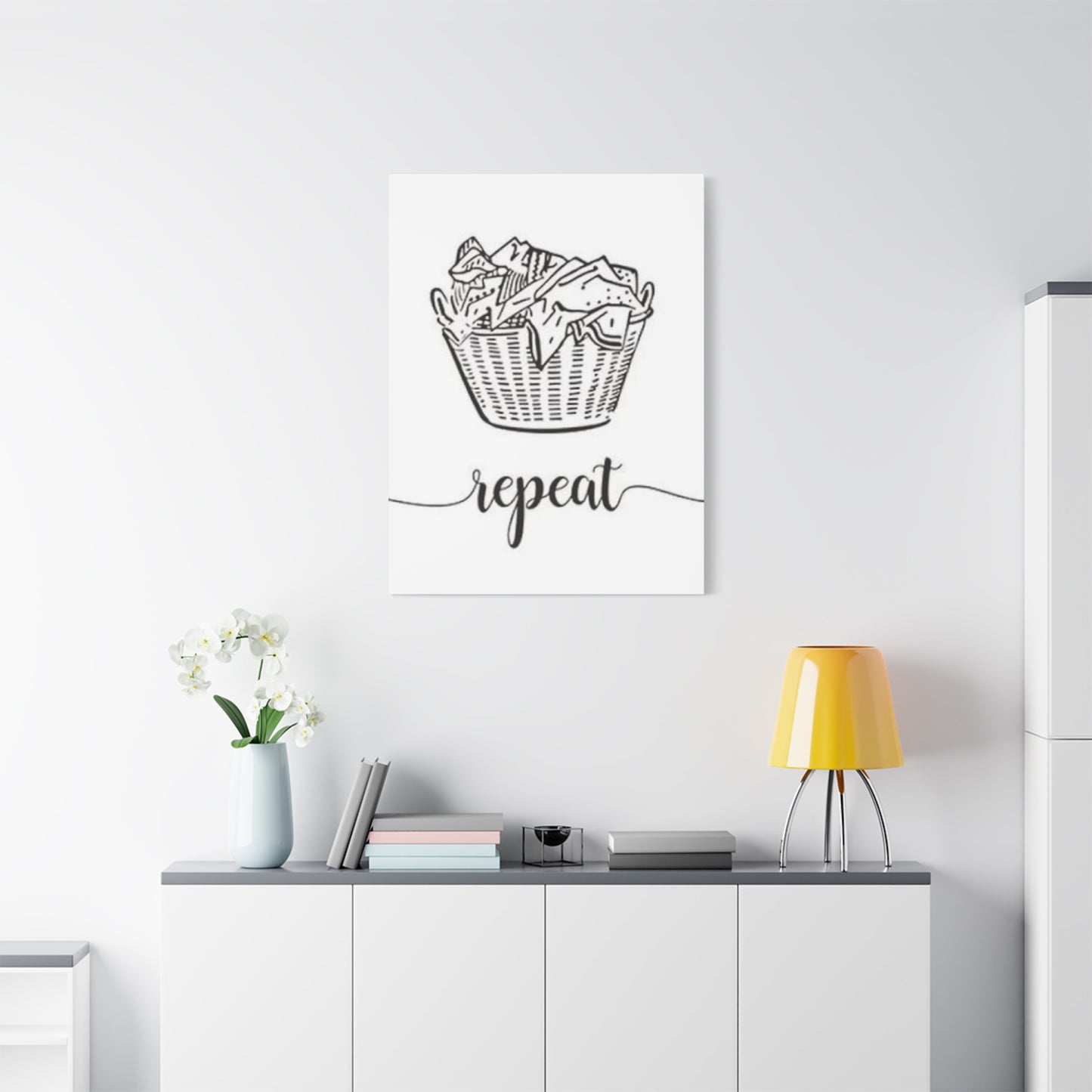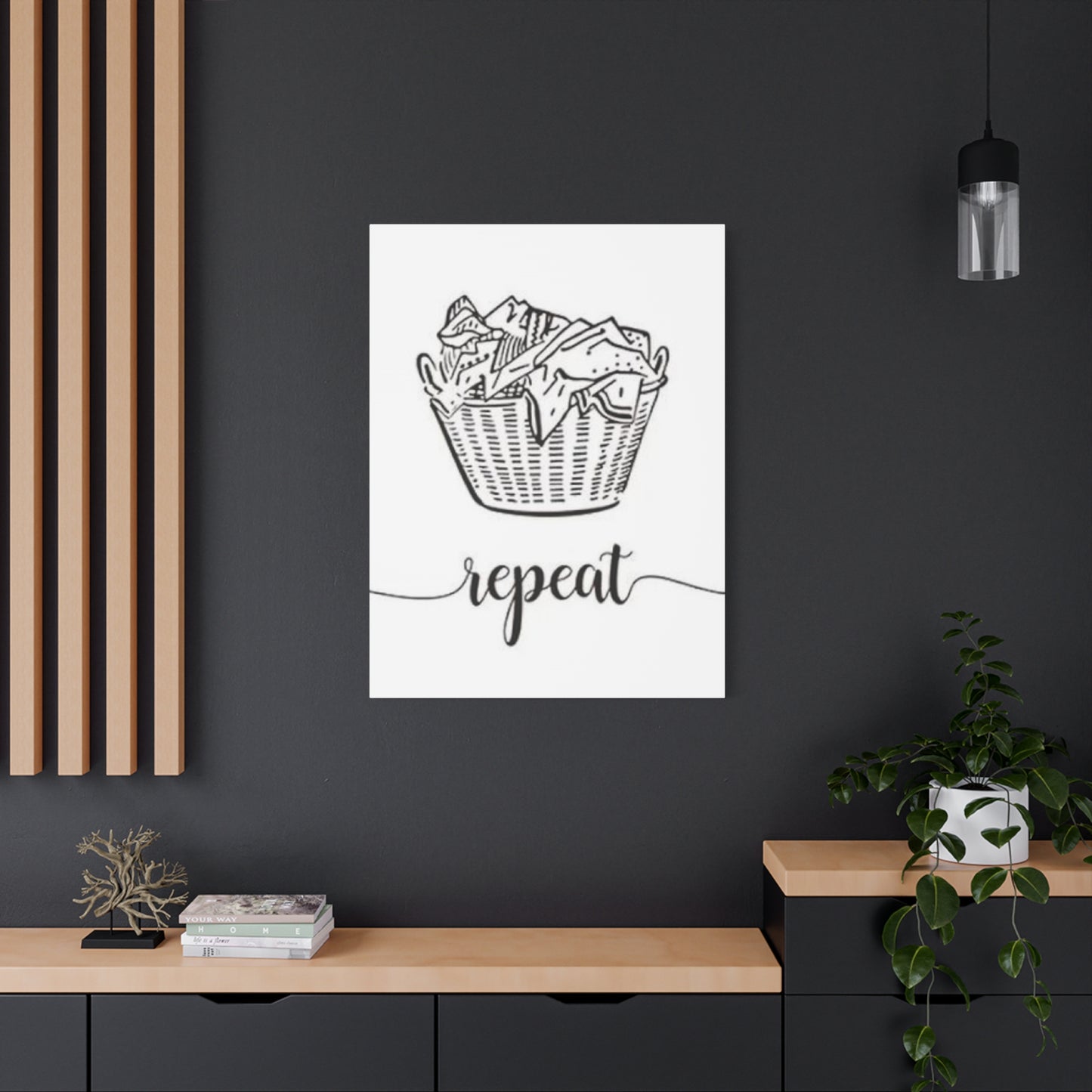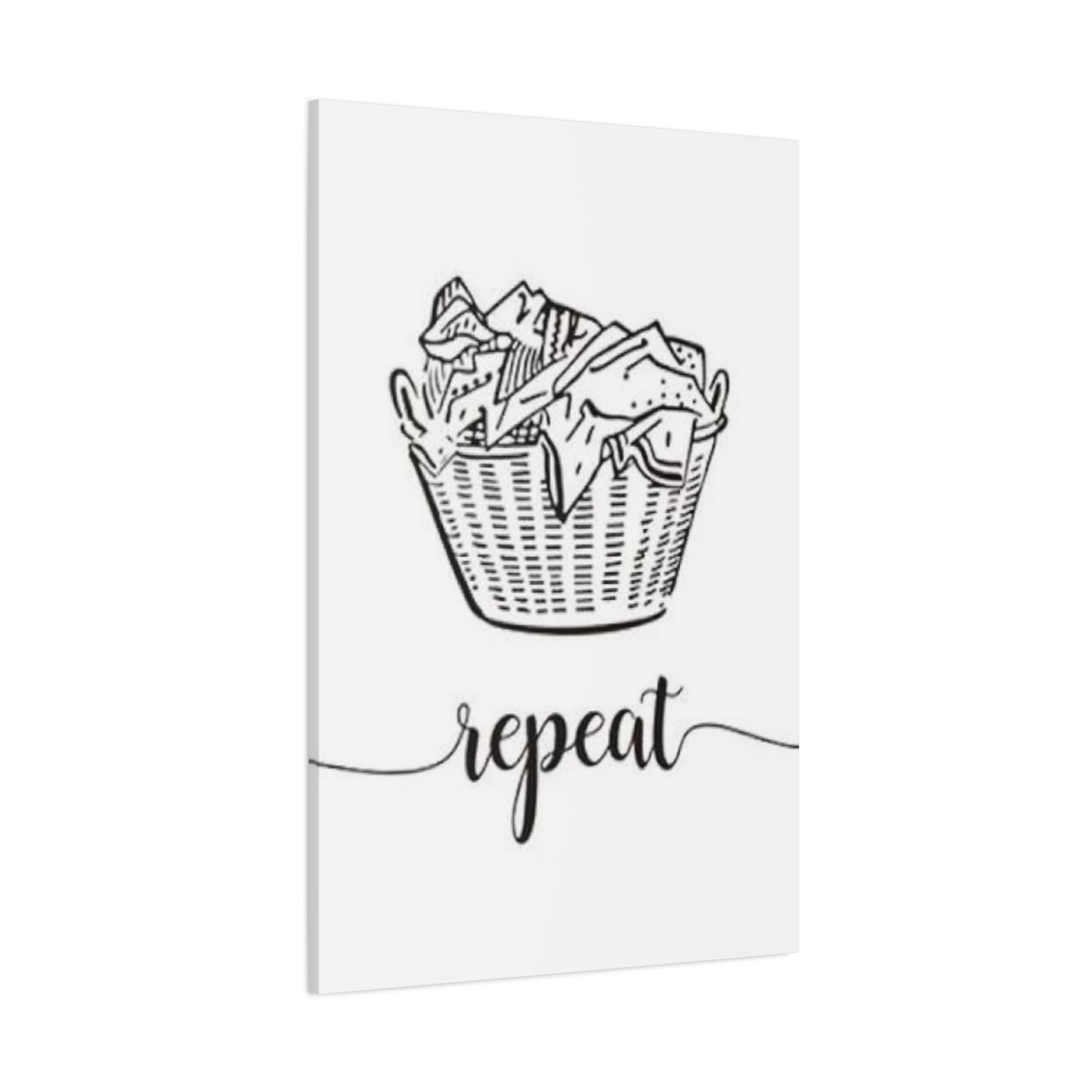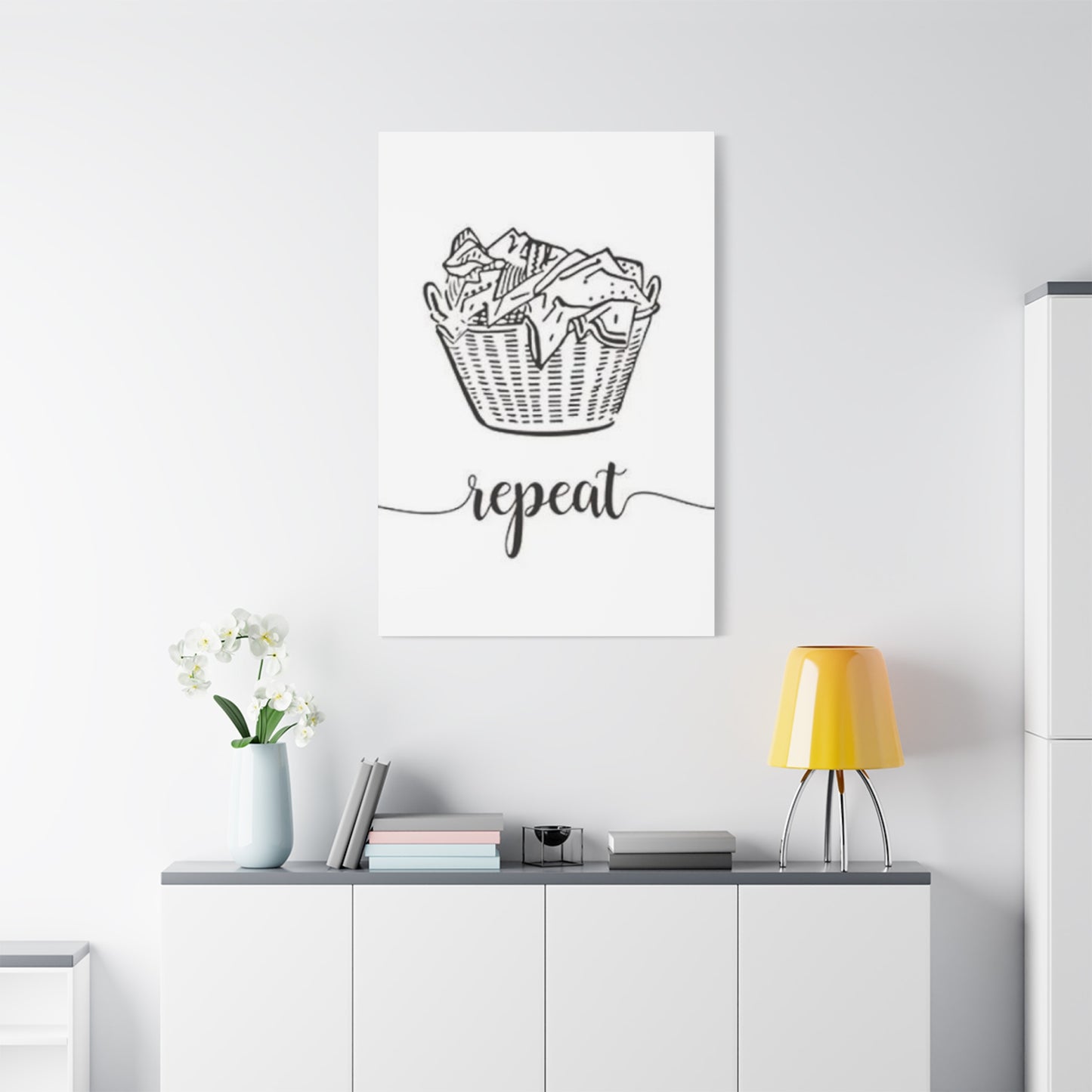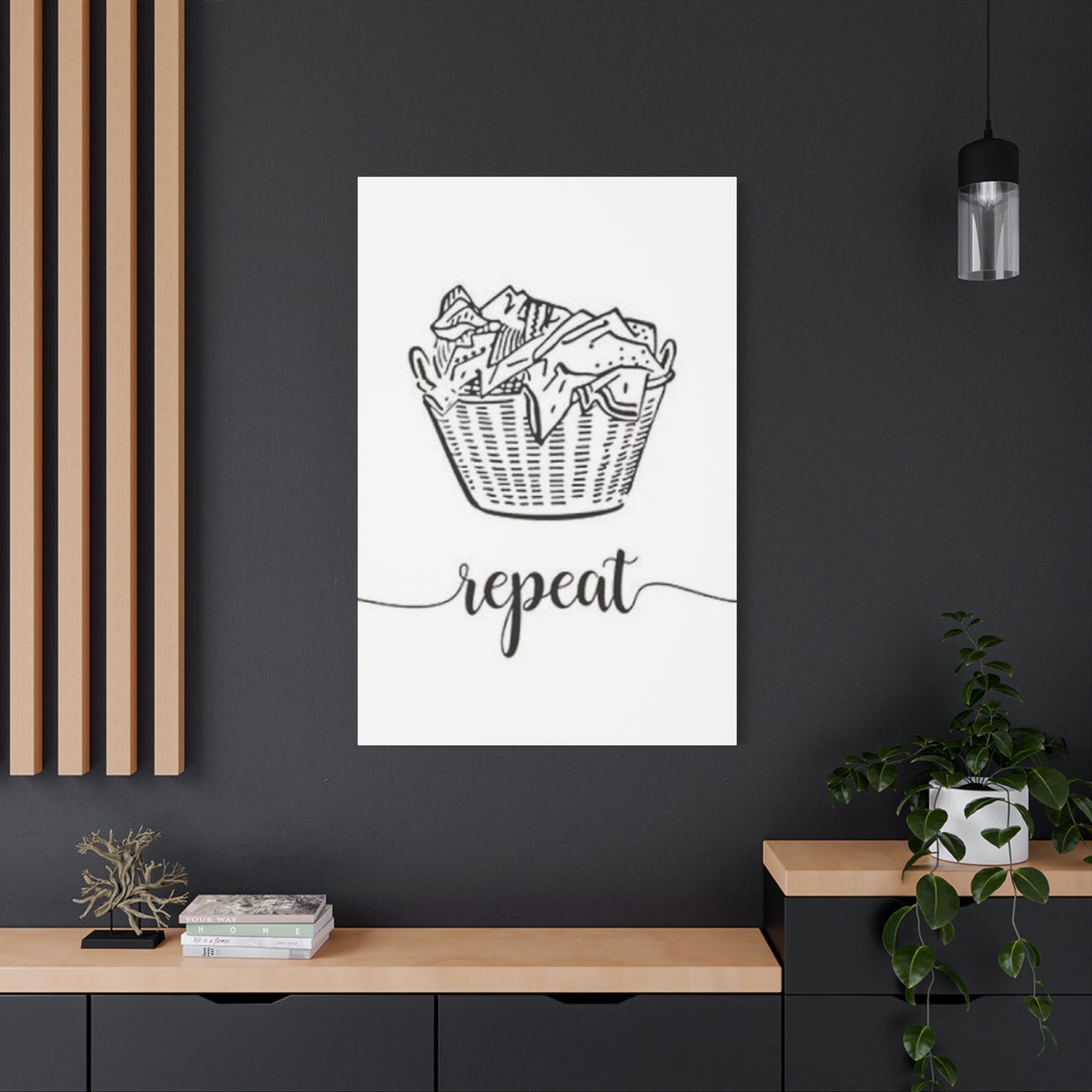Transform Your Pattern Area: The Complete Guide to Repeat Laundry Wall Art
The mundane task of doing laundry can be transformed into a more enjoyable experience through thoughtful visual enhancements. Repetitive design posters serve as powerful tools for creating an uplifting atmosphere in washing areas. These carefully crafted visual elements bring personality and vibrancy to what is often considered one of the most utilitarian rooms in the home.
When selecting repetitive pattern artwork for washing areas, homeowners discover that these designs create visual rhythm and movement that helps energize the often-dreaded chore of cleaning clothes. The strategic placement of these decorative elements can completely alter the perception of the washing area, turning it from a forgotten corner into a welcoming environment that actually makes the cleaning process more pleasant.
The beauty of repetitive design posters lies in their ability to create cohesion and flow throughout the washing area. Unlike single-image artwork, these patterns establish a sense of continuity that helps unify the various elements within the room. This visual consistency is particularly important in washing areas, where multiple appliances, storage solutions, and functional elements can create visual chaos without proper coordination.
Repetitive patterns work exceptionally well in washing areas because they provide visual interest without overwhelming the functional aspects of the room. The rhythmic nature of these designs creates a calming effect that can make the time spent doing laundry feel less burdensome. Additionally, the repetitive elements help mask the industrial appearance of washing machines and dryers, softening the overall aesthetic of the area.
The psychological impact of well-chosen repetitive design posters cannot be understated. These visual elements create a sense of order and harmony that reflects positively on the household management tasks performed in the washing area. When homeowners surround themselves with appealing visual elements, even mundane tasks become more tolerable and sometimes even enjoyable.
The Effectiveness of Repetitive Poster Designs in Washing Areas
Understanding why repetitive poster designs excel in washing environments requires examining both the functional and aesthetic aspects of these unique rooms. Washing areas present distinct challenges that make repetitive patterns particularly suitable solutions for visual enhancement.
The primary advantage of repetitive designs lies in their ability to create visual unity in areas dominated by large appliances and utilitarian fixtures. Washing machines, dryers, utility sinks, and storage cabinets create a complex visual landscape that can appear chaotic without proper visual coordination. Repetitive patterns provide the necessary visual thread that ties these disparate elements together, creating a cohesive and harmonious environment.
Repetitive patterns also excel at creating the illusion of expanded dimensions in typically compact washing areas. Many homes feature washing areas that are tucked into small closets, basement corners, or narrow hallways. The strategic use of repetitive patterns can make these tight quarters feel more spacious and less claustrophobic. Horizontal repetitive patterns can make narrow areas appear wider, while vertical patterns can create the impression of higher ceilings.
The durability factor makes repetitive poster designs particularly practical for washing environments. These areas experience high humidity levels, temperature fluctuations, and occasional splashing from washing activities. Quality repetitive poster designs can withstand these challenging conditions better than many other decorative options, maintaining their appearance and impact over extended periods.
Repetitive designs also offer flexibility in terms of color coordination and theme development. Whether the washing area features neutral appliances or bold-colored machines, repetitive patterns can be selected to complement existing elements while adding visual interest. This adaptability makes repetitive designs suitable for a wide range of decorative preferences and existing color schemes.
The maintenance aspect of repetitive poster designs makes them ideal for washing areas. Unlike textured or three-dimensional decorative elements that can collect dust and lint, poster designs can be easily cleaned with simple wiping, making them practical choices for environments where cleanliness is essential.
Creative and Practical Washing Area Visual Enhancement Concepts
Developing creative approaches to washing area visual enhancement requires balancing aesthetic appeal with practical functionality. The most successful visual enhancement concepts seamlessly integrate decorative elements with the room's primary purpose while creating an environment that feels welcoming and inspiring.
One highly effective approach involves creating themed visual narratives through repetitive poster designs. These narratives can range from nature-inspired themes featuring botanical patterns to urban concepts incorporating geometric cityscape elements. The key is selecting themes that resonate with the homeowner's personal aesthetic while maintaining appropriate scale and color relationships within the washing area.
Color psychology plays a crucial role in washing area visual enhancement. Energizing colors like vibrant blues, cheerful yellows, or refreshing greens can transform the psychological experience of doing laundry. Repetitive patterns featuring these uplifting hues create an environment that feels more like a creative workshop than a utilitarian chore area. The repetitive nature of the patterns helps distribute these positive colors throughout the visual field, maximizing their psychological impact.
Texture simulation through repetitive poster designs offers another creative approach to washing area enhancement. Patterns that simulate natural textures like wood grain, stone surfaces, or fabric weaves can add warmth and visual interest to areas dominated by smooth appliance surfaces. These textural elements create visual contrast that prevents the washing area from feeling sterile or institutional.
Seasonal rotation concepts allow homeowners to refresh their washing areas throughout the year without significant investment. Different repetitive poster designs can be swapped to reflect seasonal themes, keeping the visual environment dynamic and engaging. Spring patterns might feature fresh botanical repeats, while autumn designs could incorporate warm geometric patterns in seasonal colors.
Interactive visual elements within repetitive designs can add functional benefits to aesthetic enhancement. Patterns that incorporate subtle organizational cues, measurement references, or maintenance reminders can serve dual purposes as both decorative and functional elements. These thoughtful integrations demonstrate how visual enhancement can support the practical activities performed in washing areas.
Trending Repetitive Patterns for Washing Area Posters
Current trends in repetitive patterns for washing area posters reflect broader design movements while addressing the specific needs of these functional environments. Understanding these trends helps homeowners select designs that feel contemporary and relevant while maintaining long-term appeal.
Botanical repeats continue to dominate trending patterns, offering natural beauty that counteracts the mechanical nature of washing appliances. These patterns range from delicate herb illustrations to bold tropical leaf designs, each bringing a different mood to the washing environment. The organic shapes and natural colors of botanical repeats create a refreshing contrast to the geometric lines and neutral colors typical of washing machines and dryers.
Geometric patterns have evolved beyond simple shapes to incorporate complex mathematical relationships and optical illusions. Modern geometric repeats often feature gradient effects, overlapping elements, and dynamic color transitions that create movement and energy within the washing area. These sophisticated patterns appeal to homeowners who prefer contemporary aesthetic approaches while maintaining the visual benefits of repetitive design.
Vintage-inspired patterns are experiencing renewed popularity, particularly those that reference mid-century design elements or retro color palettes. These patterns often feature simplified shapes, bold color combinations, and nostalgic references that create a sense of comfort and familiarity in the washing area. The retro aesthetic can transform utilitarian washing areas into spaces that feel intentionally designed and thoughtfully curated.
Abstract expressionist patterns offer artistic sophistication while maintaining the practical benefits of repetitive design. These patterns often feature brushstroke textures, color bleeding effects, and organic compositions that bring fine art sensibilities to functional areas. The abstract nature of these designs allows them to complement a wide range of existing decor while adding visual sophistication to the washing environment.
Minimalist geometric patterns reflect the ongoing trend toward simplified design approaches. These patterns typically feature clean lines, limited color palettes, and generous negative areas that create a sense of calm and order. In washing areas, minimalist patterns can help create a zen-like atmosphere that makes chore time feel more like meditation time.
Employing Color Repetition to Invigorate Chore Areas
Color repetition serves as a powerful tool for transforming utilitarian chore areas into energizing environments that support positive psychological states during household management tasks. The strategic use of repeated color elements creates visual rhythm and emotional resonance that can significantly impact the experience of performing routine cleaning tasks.
The science of color psychology demonstrates that specific hues can influence mood, energy levels, and motivation. In chore areas, the repetitive use of energizing colors like vibrant oranges, stimulating reds, or uplifting yellows can create an atmosphere that counteracts the typically mundane nature of household tasks. When these colors appear in repetitive patterns, their psychological impact is amplified through consistent visual reinforcement.
Creating color gradients through repetitive patterns offers a sophisticated approach to chore area energization. Patterns that transition from one energizing hue to another create visual movement that keeps the eye engaged and prevents the color scheme from feeling static. These gradient effects can make time spent in chore areas feel more dynamic and less monotonous.
Complementary color relationships within repetitive patterns create visual vibrancy that energizes chore areas. Patterns that pair warm and cool tones, such as orange and blue or red and green, create natural tension and visual excitement. This dynamic color interaction helps maintain visual interest during extended periods spent in the chore area.
Seasonal color rotation through repetitive patterns allows homeowners to adjust the energy level of their chore areas throughout the year. Bright, energizing colors might be most welcome during dark winter months, while cooler, more refreshing hues could provide relief during hot summer periods. The ability to change color schemes through poster rotation offers flexibility in managing the psychological atmosphere of chore areas.
The relationship between color intensity and pattern scale requires careful consideration in chore area design. Large-scale patterns with intense colors can overwhelm small chore areas, while subtle colors in small-scale patterns might lack sufficient impact to influence the room's atmosphere. Finding the right balance ensures that color repetition achieves its energizing goals without creating visual chaos.
Simplified Repetitive Poster Visual Enhancement for Washing Areas
The minimalist approach to washing area visual enhancement emphasizes the principle that sometimes less truly is more. Simplified repetitive poster designs can create powerful visual impact while maintaining the clean, uncluttered aesthetic that many homeowners prefer in functional areas.
Simplified repetitive patterns typically feature limited color palettes that create harmony rather than contrast. Monochromatic schemes using various shades and tints of a single color can create sophisticated visual depth while maintaining the calm, organized feeling that supports efficient task completion. These restrained color approaches prevent visual distractions that might interfere with the practical activities performed in washing areas.
The use of negative area in simplified patterns creates breathing room that prevents washing areas from feeling cramped or overwhelming. Patterns with generous amounts of white or neutral background allow the eye to rest between pattern elements, creating a sense of spaciousness even in compact washing areas. This strategic use of negative area helps maintain the functional clarity that washing areas require.
Linear repetitive patterns exemplify the simplified approach to washing area enhancement. Simple horizontal stripes, vertical lines, or grid patterns can create visual structure without introducing complex elements that might feel chaotic in utilitarian environments. These linear patterns can also serve practical purposes, such as providing visual references for organization or maintenance activities.
Texture through repetition rather than color can create simplified patterns with significant visual impact. Patterns that rely on subtle variations in tone, shadow, or surface simulation can add depth and interest to washing areas without introducing distracting color elements. This approach works particularly well in washing areas where neutral color schemes are preferred.
The scalability of simplified patterns makes them particularly suitable for washing areas of varying sizes. Simple repetitive elements can be adjusted in scale to work effectively in compact closet washing areas or larger dedicated rooms. This flexibility ensures that the visual enhancement remains proportionally appropriate regardless of the area's dimensions.
Merging Humor and Style in Washing Area Artwork
The integration of humor into washing area artwork represents a sophisticated approach to making household chores more enjoyable while maintaining aesthetic appeal. Successful humor integration requires balancing wit with visual sophistication to create artwork that remains appealing over time.
Clever wordplay within repetitive patterns can add personality to washing areas without relying on overtly comedic imagery. Patterns that incorporate subtle puns, amusing phrases, or playful typography can create smiles during routine tasks while maintaining the visual cohesion that repetitive designs provide. These text-based patterns work particularly well when the humor relates directly to cleaning, organization, or household management themes.
Visual puns through pattern repetition offer another approach to humor integration. Patterns that playfully reference cleaning tools, soap bubbles, or clothing items can add whimsical elements while maintaining the functional aesthetic appropriate for washing areas. The repetitive nature of these humorous elements prevents them from becoming overwhelming or distracting.
Ironic juxtaposition within repetitive patterns can create sophisticated humor that appeals to homeowners with discerning aesthetic tastes. Patterns that contrast mundane cleaning themes with elevated artistic treatments, or that present utilitarian objects in unexpected contexts, can add intellectual humor that remains engaging over time.
Color-based humor through pattern repetition might involve unexpected color combinations or playful interpretations of traditional cleaning-related hues. Patterns that present typically serious colors in whimsical arrangements or that use bright, cheerful colors in unexpected contexts can create lighthearted atmospheres without relying on literal humorous imagery.
The sustainability of humor in repetitive patterns requires careful consideration of comedic elements that maintain their appeal over extended periods. Visual jokes that rely on current trends or temporary cultural references may lose their impact quickly, while more universal forms of humor tend to provide lasting entertainment value.
Professional Framing Techniques for Repetitive Pattern Washing Area Posters
Proper framing techniques can elevate repetitive pattern posters from simple decorative elements to professional-quality artwork that enhances the overall aesthetic of washing areas. Understanding framing principles helps homeowners maximize the visual impact of their poster investments while ensuring long-term durability in challenging environmental conditions.
Frame selection significantly impacts how repetitive patterns interact with their surrounding environment. Simple, clean frame styles typically work best with complex repetitive patterns, allowing the pattern itself to serve as the primary visual focus. Conversely, simpler patterns can support more elaborate frame designs that add architectural interest to the washing area.
Matting considerations for repetitive patterns require understanding how border treatments affect pattern perception. Wide mats can help contain busy patterns and prevent them from overwhelming compact washing areas, while narrow mats or direct framing can maximize the visual impact of more subtle patterns. The mat color should complement rather than compete with the pattern colors.
Protective glazing becomes particularly important in washing areas due to humidity, temperature fluctuations, and potential splashing. UV-protective glazing helps prevent pattern colors from fading due to both natural and artificial light exposure, while moisture-resistant treatments protect against humidity-related damage. These protective measures ensure that framed patterns maintain their visual appeal over extended periods.
Grouping strategies for multiple repetitive pattern pieces can create powerful visual statements in larger washing areas. Consistent frame styles across multiple pieces create cohesion, while varied sizing can add visual rhythm and prevent monotony. The spacing between grouped pieces affects how the individual patterns interact to create overall visual impact.
Mounting techniques must account for the environmental conditions typical of washing areas. Proper backing materials prevent moisture infiltration that could damage patterns over time, while appropriate hanging hardware ensures secure mounting despite vibrations from operating appliances. These technical considerations support the longevity of the framing investment.
DIY Repetitive Pattern Washing Area Visual Projects
Creating custom repetitive patterns for washing areas through DIY projects offers homeowners the opportunity to develop truly personalized visual solutions while controlling costs and ensuring perfect coordination with existing decor elements.
Digital design tools make pattern creation accessible to homeowners with varying levels of artistic experience. Software applications allow users to experiment with different motifs, color combinations, and repetition schemes until they achieve desired visual effects. These tools often include templates specifically designed for repetitive pattern creation, simplifying the design process for novice users.
Printing considerations for DIY repetitive patterns require understanding paper types, ink quality, and sizing options that will perform well in washing area environments. High-quality printing papers with moisture-resistant properties help ensure that DIY patterns maintain their appearance despite challenging environmental conditions. Professional printing services can often provide superior results compared to home printing equipment.
Stenciling techniques offer hands-on approaches to creating repetitive patterns directly on poster materials or even washing area surfaces. This tactile approach allows homeowners to create unique textures and effects that might be difficult to achieve through digital methods. Stenciling also provides opportunities to incorporate raised elements or special finishing techniques.
Collage approaches to repetitive pattern creation allow homeowners to incorporate meaningful personal elements into their washing area artwork. Family photos, fabric samples, or other significant materials can be arranged in repetitive patterns that create both visual interest and emotional connection to the washing area environment.
Mixed media techniques can add dimensional elements to repetitive pattern posters, creating visual depth and tactile interest. Combining printed elements with hand-drawn details, fabric pieces, or other materials can result in unique patterns that reflect individual creative expression while maintaining the visual benefits of repetitive design.
Sources for Acquiring Repetitive Poster Washing Prints
The marketplace for repetitive pattern posters suitable for washing areas includes diverse sources ranging from mass-market retailers to specialized artistic suppliers. Understanding the advantages and characteristics of different sources helps homeowners make informed purchasing decisions that align with their aesthetic preferences and budget considerations.
Online marketplaces offer extensive selections of repetitive pattern posters with the convenience of home delivery and easy comparison shopping. These platforms often feature user reviews that provide insights into print quality, color accuracy, and durability. However, the inability to examine materials and colors in person before purchase can sometimes result in disappointing outcomes.
Local art supply stores typically carry higher-quality printing materials and may offer custom printing services for personal pattern designs. These establishments often employ knowledgeable staff who can provide guidance on paper selection, sizing options, and finishing techniques appropriate for washing area applications. The ability to examine samples and discuss specific requirements makes local suppliers valuable resources for quality-conscious homeowners.
Professional printing services can transform digital pattern designs into high-quality posters using commercial-grade equipment and materials. These services often offer options not available through consumer-level sources, including specialty papers, large format printing, and professional finishing techniques. While more expensive than mass-market options, professional printing typically delivers superior results that justify the investment.
Specialty online retailers focusing on home decor often curate collections of repetitive patterns specifically designed for various room applications. These sources frequently offer coordinated collections that simplify the process of selecting patterns that work well together. The specialized focus often results in better understanding of practical requirements for different room environments.
Artist direct sales through online platforms or craft fairs provide opportunities to acquire unique repetitive patterns while supporting individual creators. These sources often offer the possibility of custom modifications or personalization that mass-market suppliers cannot provide. The direct relationship with artists also allows for better understanding of the materials and techniques used in pattern creation.
Coordinating Repetitive Washing Art with Room Decor
Successful integration of repetitive pattern artwork into washing area decor requires understanding how these visual elements interact with existing colors, textures, and functional elements to create cohesive and harmonious environments.
Color coordination forms the foundation of successful artwork integration. Repetitive patterns should either complement existing color schemes by incorporating similar hues or create intentional contrast that enhances rather than conflicts with established color relationships. The proportional representation of different colors within the pattern should reflect their importance in the overall room scheme.
Texture relationships between repetitive patterns and existing room elements significantly impact visual harmony. Smooth pattern surfaces can provide relief from heavily textured appliance finishes, while textured patterns can add warmth to rooms dominated by smooth surfaces. Understanding these texture interactions helps create balanced visual environments that feel intentionally designed.
Scale considerations ensure that repetitive patterns maintain appropriate proportional relationships with room dimensions and existing furnishings. Large-scale patterns can overwhelm compact washing areas, while patterns that are too small might lack sufficient visual impact to contribute meaningfully to the room's aesthetic. Finding the right scale balance prevents patterns from appearing either overpowering or insignificant.
Style consistency between repetitive patterns and existing decor elements creates cohesive environments that feel intentionally designed. Contemporary patterns work best in modern washing areas, while traditional patterns complement classic decor approaches. However, carefully managed style mixing can create interesting and dynamic visual environments when executed thoughtfully.
Lighting interactions affect how repetitive patterns appear within their room contexts. Natural light can enhance certain colors while washing out others, and artificial lighting can create color shifts that affect pattern perception. Understanding these lighting effects helps in selecting patterns that maintain their intended appearance under the specific lighting conditions present in individual washing areas.
Establishing Joyful Washing Environments Through Patterns
The psychological impact of well-chosen patterns extends far beyond simple visual appeal, actively contributing to the creation of joyful environments that transform routine household tasks into more positive experiences.
Pattern psychology demonstrates that repetitive visual elements can influence mood and emotional state through various mechanisms including rhythm, color association, and symbolic meaning. Patterns that incorporate uplifting colors, organic shapes, or positive symbolic elements can create environments that support better emotional states during task completion.
Rhythm creation through pattern repetition establishes visual cadences that can influence psychological perception of time and activity. Patterns with faster rhythms might energize and motivate, while slower rhythms can create calming effects that make time spent in washing areas feel more relaxed and pleasant. Understanding these rhythmic effects helps in selecting patterns that support desired psychological outcomes.
Personal meaning incorporation into pattern selection creates emotional connections that enhance the joy derived from washing area environments. Patterns that reference personal interests, meaningful memories, or cultural connections can transform utilitarian areas into personally significant environments that feel more like extensions of individual identity than mere functional rooms.
Seasonal pattern rotation maintains freshness and prevents visual boredom that can diminish the joy-creating effects of repetitive artwork. Regular pattern changes provide opportunities to refresh the psychological atmosphere of washing areas, maintaining their positive impact over extended periods. This rotation approach also allows homeowners to experiment with different moods and themes throughout the year.
Color temperature management through pattern selection can influence the perceived warmth and welcome feeling of washing environments. Warm color patterns create cozy, inviting atmospheres, while cool color patterns can feel fresh and energizing. Understanding these temperature effects enables homeowners to create washing areas that support their preferred emotional experiences during chore completion.
The Psychological Foundations of Repetitive Pattern Design
Understanding the psychological mechanisms that make repetitive patterns effective in environmental design provides insights into why these visual elements succeed in transforming functional areas into more pleasant and engaging environments.
Pattern recognition represents a fundamental human cognitive process that creates satisfaction when we successfully identify and predict repetitive elements. This innate pattern recognition ability makes repetitive designs particularly engaging because they provide ongoing opportunities for successful cognitive prediction and completion. In washing areas, this cognitive engagement can help maintain interest during routine tasks.
Visual rhythm through pattern repetition creates psychological effects similar to musical rhythm, establishing cadences that can influence mood, energy levels, and time perception. Fast repetitive patterns can create energizing effects that combat the monotony of routine tasks, while slower patterns can create meditative states that make chore time feel more relaxing.
Order creation through repetitive patterns addresses fundamental human psychological needs for structure and predictability in environmental contexts. Washing areas often contain complex arrays of appliances, supplies, and functional elements that can create visual chaos. Repetitive patterns provide organizing visual principles that help create sense of order and control.
Stress reduction through pattern viewing has been documented in various psychological studies. The predictable nature of repetitive patterns can activate relaxation responses that counteract the stress often associated with household chore completion. This stress reduction effect can make time spent in washing areas feel more pleasant and less burdensome.
Cultural symbolism within repetitive patterns can trigger positive associations and memories that enhance psychological well-being. Patterns that incorporate symbols, colors, or motifs with positive cultural or personal associations can create environments that feel more meaningful and emotionally supportive.
Washing Area Organization Enhanced by Visual Art
The relationship between visual art and functional organization in washing areas demonstrates how aesthetic elements can support and enhance practical efficiency while creating more pleasant working environments.
Visual zoning through repetitive patterns can help define different functional areas within washing rooms, creating clear organizational structures that support efficient task completion. Patterns can visually separate washing, drying, folding, and storage zones, making it easier to maintain organized workflows during laundry processing.
Color coding through pattern selection can support organizational systems by providing visual cues that reinforce functional categorizations. Different pattern colors might correspond to different types of laundry, seasonal items, or family member belongings, creating visual reinforcement for organizational systems that helps maintain order over time.
Height emphasis through vertical patterns can draw attention to upper storage areas that might otherwise be overlooked, encouraging better utilization of available storage opportunities. This visual emphasis helps ensure that organizational systems take advantage of all available room dimensions rather than focusing only on easily accessed lower areas.
Process flow support through directional patterns can provide subtle guidance for efficient task sequences. Patterns that suggest movement or direction can reinforce optimal workflows, helping users maintain efficient habits during routine laundry processing activities.
Motivation maintenance through appealing visual environments supports sustained organizational effort by making time spent in washing areas more pleasant. When organizational tasks are performed in visually appealing environments, users are more likely to maintain organizational systems and take pride in keeping areas tidy and functional.
Gift Ideas Incorporating Repetitive Poster Washing Art
Repetitive pattern washing area artwork represents thoughtful gift options that combine practical utility with aesthetic appeal, making them suitable for various gift-giving occasions and recipient preferences.
Housewarming gifts featuring repetitive washing area patterns provide new homeowners with immediately useful decorative elements that help establish personal style in functional areas often overlooked during initial decorating phases. These gifts demonstrate thoughtfulness by addressing areas that recipients might not prioritize in their own decorating efforts.
Wedding gift collections might include coordinated repetitive patterns designed for multiple household functional areas, with washing area patterns serving as components of larger home aesthetic themes. This approach provides newlyweds with cohesive decorative elements that support their joint household establishment efforts.
Mother's Day gifts that acknowledge the often-thankless nature of household management can transform utilitarian washing areas into more pleasant environments. Repetitive patterns that incorporate uplifting colors or meaningful symbols can demonstrate appreciation for ongoing household contributions while providing lasting utility.
Holiday gift themes can incorporate seasonal repetitive patterns that allow recipients to refresh their washing area aesthetics throughout the year. Collections of patterns representing different seasons or holidays provide ongoing gift value that extends well beyond the initial presentation occasion.
Custom personalization options make repetitive pattern gifts more meaningful by incorporating recipient names, family symbols, or personally significant colors and motifs. These customized elements transform generic decorative items into personally meaningful gifts that reflect the giver's understanding of recipient preferences and lifestyle.
Contemporary vs Traditional Repetitive Washing Posters
The distinction between contemporary and traditional approaches to repetitive washing area posters reflects broader design philosophy differences while addressing the specific functional and aesthetic requirements of utilitarian room environments.
Contemporary repetitive patterns typically emphasize geometric precision, bold color combinations, and abstract compositional approaches that reflect current design trends. These patterns often incorporate digital design techniques that allow for complex color gradients, precise mathematical relationships, and sophisticated optical effects that would be difficult to achieve through traditional design methods.
Traditional repetitive patterns draw inspiration from historical design traditions including botanical illustrations, classical geometric forms, and culturally significant motifs that have proven appeal across extended time periods. These patterns often feature hand-drawn aesthetic qualities and color palettes that reference natural materials and traditional craft techniques.
Color philosophy differences between contemporary and traditional approaches reflect different attitudes toward environmental psychology and aesthetic preferences. Contemporary patterns might embrace bold, unexpected color combinations that create energizing effects, while traditional patterns often rely on time-tested color relationships that create comfortable, familiar atmospheres.
Pattern complexity varies significantly between contemporary and traditional approaches. Contemporary patterns might feature complex layering, multiple pattern systems operating simultaneously, or sophisticated mathematical relationships. Traditional patterns often emphasize clarity and simplicity that allows individual pattern elements to be easily identified and appreciated.
Longevity considerations affect the choice between contemporary and traditional pattern approaches. Contemporary patterns might feel more immediately exciting but could appear dated as design trends evolve. Traditional patterns might seem less immediately striking but often maintain their appeal over extended time periods.
Implementing Geometric Patterns in Washing Art
Geometric patterns offer particular advantages for washing area applications due to their mathematical precision, visual clarity, and ability to create sophisticated aesthetic effects while maintaining the clean, organized feeling appropriate for functional environments.
Mathematical relationships within geometric patterns create visual harmonies that appeal to fundamental human appreciation for order and proportion. Patterns based on classical mathematical ratios like the golden section or Fibonacci sequences create inherently pleasing visual effects that remain appealing over extended viewing periods. These mathematical foundations provide geometric patterns with lasting aesthetic validity.
Angular relationships in geometric patterns can reinforce or counteract the predominantly rectangular forms of washing appliances and storage elements. Sharp angular patterns might emphasize the mechanical precision of washing equipment, while softer curved geometric forms can provide visual relief from the angular dominance typical of washing area environments.
Scale manipulation in geometric patterns offers opportunities to create different visual effects within the same basic pattern framework. Large-scale geometric elements can create bold, dramatic statements, while small-scale versions of the same patterns can provide subtle texture effects. This scalability makes geometric patterns particularly versatile for washing areas of different sizes.
Color interaction within geometric patterns can create optical effects that add visual interest and energy to washing environments. Color combinations that create vibration effects, depth illusions, or movement sensations can transform static wall surfaces into dynamic visual experiences that help combat the routine nature of laundry tasks.
Symmetry types within geometric patterns affect their psychological impact and visual stability. Patterns with perfect symmetry create calm, stable feelings, while asymmetrical geometric arrangements can generate more dynamic, energizing effects. Understanding these symmetry relationships helps in selecting geometric patterns that support desired psychological atmospheres.
How Repetitive Poster Art Encourages Laundry Task Motivation
The motivational impact of well-chosen repetitive poster art in washing areas operates through multiple psychological mechanisms that can transform the experience of routine household tasks from burdensome chores into more pleasant activities.
Environmental psychology demonstrates that attractive surroundings can significantly influence motivation levels and task satisfaction. When washing areas feature appealing repetitive patterns, users experience more positive emotional states during laundry activities, which translates into increased willingness to maintain organizational systems and complete tasks thoroughly.
Color psychology within repetitive patterns can create energizing effects that combat the fatigue often associated with routine household tasks. Patterns featuring stimulating colors like vibrant oranges, energizing yellows, or motivating reds can provide psychological energy boosts that help users approach laundry tasks with more enthusiasm and focus.
Time perception alteration through engaging visual elements can make time spent in washing areas feel more pleasant and less burdensome. When users are surrounded by visually interesting repetitive patterns, their attention is partially occupied by pattern appreciation, which can make routine waiting periods during wash cycles feel shorter and more enjoyable.
Pride enhancement through environmental improvement creates positive feedback loops that reinforce continued organizational effort. When washing areas feature attractive repetitive patterns, users feel more pride in their household management areas, which motivates continued attention to cleanliness, organization, and efficient task completion.
Routine transformation through aesthetic enhancement can shift psychological associations with laundry tasks from negative to neutral or even positive. Instead of viewing washing areas as unpleasant necessities, users begin to perceive them as intentionally designed environments worthy of care and attention, which supports sustained motivation for household management activities.
Conclusion
Transforming washing areas through repetitive pattern artwork represents a sophisticated approach to enhancing functional household environments that extends far beyond simple decoration. The strategic implementation of well-chosen patterns creates psychological, aesthetic, and practical benefits that fundamentally alter the experience of routine household management tasks.
The psychological foundations underlying effective repetitive pattern use demonstrate how these visual elements tap into fundamental human cognitive processes including pattern recognition, rhythm perception, and environmental psychology. When properly selected and implemented, repetitive patterns create environments that support positive emotional states, reduce task-related stress, and enhance motivation for routine household activities. These psychological benefits transform utilitarian areas from necessary evils into pleasant environments that users actually enjoy occupying.
The practical advantages of repetitive pattern artwork in washing areas include durability in challenging environmental conditions, ease of maintenance, and flexibility in coordination with existing appliances and fixtures. Unlike many decorative approaches that require significant space or create cleaning challenges, poster-based repetitive patterns provide maximum visual impact with minimal practical complications. This efficiency makes them ideal solutions for busy households seeking aesthetic enhancement without additional maintenance burdens.
The aesthetic possibilities offered by repetitive pattern approaches encompass virtually unlimited creative expressions while maintaining the visual cohesion necessary for successful functional area design. Whether homeowners prefer contemporary geometric approaches, traditional botanical themes, or humorous personalized patterns, repetitive design principles can accommodate diverse aesthetic preferences while ensuring visual harmony within challenging utilitarian contexts.
The economic accessibility of repetitive pattern solutions makes aesthetic enhancement available to households with varying budget constraints. From DIY creation approaches to professional custom designs, options exist across the entire economic spectrum, ensuring that financial limitations need not prevent families from enjoying more pleasant household management environments. This accessibility democratizes good design and makes aesthetic enhancement a realistic goal for virtually any household.
The customization possibilities inherent in repetitive pattern approaches allow for personalization levels that reflect individual family preferences, cultural backgrounds, and lifestyle considerations. Unlike mass-market decorative solutions, repetitive patterns can be tailored to incorporate personally meaningful colors, symbols, and themes that create emotional connections between users and their functional environments. This personalization transforms generic utilitarian areas into extensions of family identity and values.
Looking toward future developments in washing area aesthetic enhancement, repetitive pattern approaches are likely to incorporate advancing digital design tools, improved printing technologies, and enhanced material durability. Smart home integration might eventually allow for pattern rotation systems that automatically adjust visual environments based on seasonal preferences, task schedules, or user mood indicators. These technological advances will expand the possibilities for creating dynamic, responsive aesthetic environments that adapt to changing needs and preferences.
The broader implications of successful functional area aesthetic enhancement extend beyond individual household satisfaction to influence community standards and cultural attitudes toward household management. As more families discover the benefits of thoughtfully designed functional environments, expectations for all household areas may evolve toward higher aesthetic standards. This cultural shift could ultimately contribute to improved quality of life through enhanced daily living experiences and reduced stress associated with routine household tasks.
The environmental sustainability aspects of poster-based repetitive pattern solutions compare favorably to many alternative decorative approaches. The minimal material requirements, extended useful life, and recyclability of quality poster materials support environmentally conscious household management approaches. Additionally, the ability to refresh visual environments through pattern rotation reduces the need for more resource-intensive redecoration approaches, supporting sustainable living practices.
The interdisciplinary nature of successful repetitive pattern implementation draws upon insights from psychology, design theory, color science, and environmental planning. This comprehensive approach ensures that aesthetic enhancements serve multiple functional and psychological purposes rather than providing merely superficial visual improvements. The integration of diverse knowledge areas creates more effective solutions that deliver lasting satisfaction and practical benefits.
The educational aspects of engaging with repetitive pattern selection and implementation can enhance family members' understanding of design principles, color relationships, and environmental psychology. Children growing up in thoughtfully designed functional environments develop appreciation for aesthetic quality and understanding of how environmental choices influence daily experience. These educational benefits extend the value of aesthetic enhancement investments beyond immediate practical and psychological advantages.
The community building potential of sharing successful aesthetic enhancement approaches creates opportunities for neighbors and friends to learn from each other's creative solutions. Social media platforms and home improvement communities provide venues for sharing repetitive pattern ideas, techniques, and results, building supportive networks around household management and aesthetic enhancement activities. These community connections can reduce isolation and create shared appreciation for domestic creativity and skill development.
In conclusion, the comprehensive approach to washing area enhancement through repetitive pattern artwork represents a sophisticated integration of aesthetic, psychological, and practical considerations that can significantly improve the quality of daily household management experiences. The accessibility, flexibility, and effectiveness of these solutions make them valuable investments for families seeking to create more pleasant and supportive home environments that reflect their values, preferences, and aspirations for enhanced daily living experiences.

















